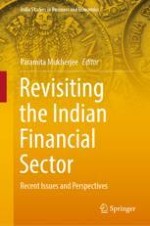2022 | OriginalPaper | Buchkapitel
Shadow Banking and Non-banking Financial Companies in India: An Overview
verfasst von : Sankarshan Basu, Jaslene Bawa
Erschienen in: Revisiting the Indian Financial Sector
Verlag: Springer Nature Singapore
Aktivieren Sie unsere intelligente Suche, um passende Fachinhalte oder Patente zu finden.
Wählen Sie Textabschnitte aus um mit Künstlicher Intelligenz passenden Patente zu finden. powered by
Markieren Sie Textabschnitte, um KI-gestützt weitere passende Inhalte zu finden. powered by
